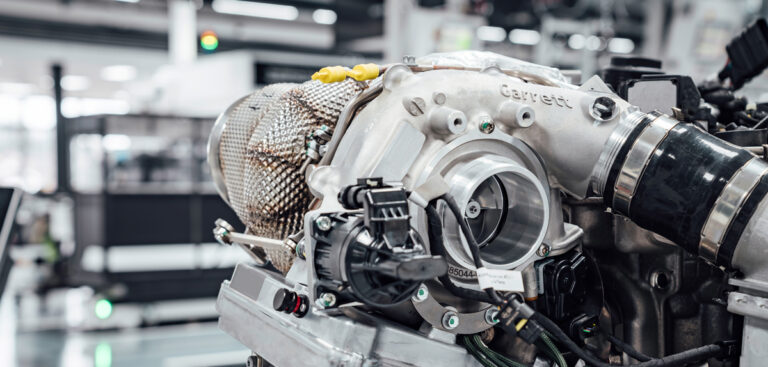The MGU-H energy recovery technology currently deployed in Formula 1 is often cited as being irrelevant to road car development but Mercedes-AMG looks set to prove that assertion wrong as it is in the final stages of developing an electric exhaust gas turbocharger for automotive use, which both harnesses waste exhaust heat energy while also improving turbocharger response.
Developed in partnership with Garrett Motion, this technology is directly derived from Mercedes’ Formula 1 experience and resolves the conflicting goals between a small, fast-reacting turbocharger that achieves relatively low peak performance and a large turbocharger with a high peak performance that can suffer from turbo lag.
There are considerable differences between the units used in Formula 1 and those for road-going applications. An F1 MGU operates at around 800V and produces in excess of 100kW. It is used to either charge the car’s battery or feeds power directly to the MGU-K. The road going MGU will run at 48V and, initially at least, simply be used to control the speed of the compressor.
Impressively, Mercedes and Garret have been able to create a motor which is just 4cm deep, allowing it to be sandwiched between the turbo’s compressor and turbine sections, keeping the overall package compact.
There are distinct similarities in how both Mercedes’ road and F1 systems aid throttle response. Specifically, the electric motor is able to directly control the speed of the compressor wheel, so even off throttle, compressor speed can be maintained, ensuring almost instantaneous boost on reapplication of power.
In the case of the new system, the turbocharger achieves speeds of up to 170,000rpm (higher than in F1, where speed is capped at 120,000rpm), which enables a very high rate of air flow to be achieved.
Mercedes also stated that the turbocharger, electric motor and power electronics are connected to the combustion engine’s cooling circuit. An impressive feat given that electric motors and power electronics do not tend to be durable at the same temperatures that IC engine coolant achieves.
The company has high hopes for the technology. Tobias Moers, chairman of the board of management at Mercedes-AMG, said, “This is an example of the transfer of Formula 1 technology to the road, something with which we will take turbocharged combustion engines to a previously unattainable level of agility.”



